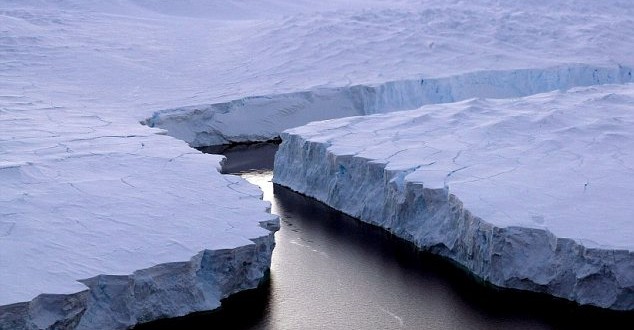New research indicates that the cause of the global warming ‘pause’ is trapped deep in the Atlantic Ocean.
Researchers from the University of Washington (UW) say that heat from the surface is plunging nearly a mile down in the north and south Atlantic, affecting the balance between incoming heat and heat radiated back into the atmosphere, writes Nature World News.
“Every week there’s a new explanation of the hiatus,” said corresponding author Ka-Kit Tung, a UW professor of applied mathematics and adjunct faculty member in atmospheric sciences.
“Many of the earlier papers had necessarily focused on symptoms at the surface of the Earth, where we see many different and related phenomena. We looked at observations in the ocean to try to find the underlying cause,” said Tung.
The results show that a slow-moving current in the Atlantic, which carries heat between the two poles, sped up earlier this century to draw heat down almost 1,500 meters.
“The finding is a surprise, since the current theories had pointed to the Pacific Ocean as the culprit for hiding heat. But the data are quite convincing and they show otherwise,” Tung said.
Tung and co-author Xianyao Chen of the Ocean University of China, who was a UW visiting professor last year, used recent observations of deep-sea temperatures from Argo floats that sample the water down to 2,000 meters depth, as well as older oceanographic measurements and computer reconstructions.
Results show an increase in heat sinking around 1999, when the rapid warming of the 20th century stopped.
“There are recurrent cycles that are salinity-driven that can store heat deep in the Atlantic and Southern oceans,” Tung said.
When observations show the ocean cycle flipped, in about 2000, the current began to draw heat deeper into the ocean, working to counteract human-driven warming.
The cycle starts when saltier, denser water at the surface northern part of the Atlantic, near Iceland, causes the water to sink.
This changes the speed of the huge current in the Atlantic Ocean that circulates heat throughout the planet.
Changes in Atlantic Ocean circulation historically meant roughly 30 warmer years followed by 30 cooler years. Now that it is happening on top of global warming, however, the trend looks more like a staircase, researchers said.
This explanation implies that the current slowdown in global warming could last for another decade, or longer, and then rapid warming will return, they said.
Agencies/Canadajournal
 Canada Journal – News of the World Articles and videos to bring you the biggest Canadian news stories from across the country every day
Canada Journal – News of the World Articles and videos to bring you the biggest Canadian news stories from across the country every day



